Tinuom Festival of Cabatuan
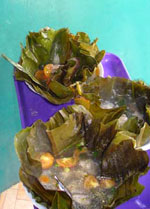
Much of the plantation wealth in the towns of Iloilo Province was used to adorn its areas with imposing structures, ornate squares, and above all, churches. Today, Iloilo is highly urbanized, but significant chunks of it are still recognizably colonial. Taken as a whole, it doesn't have the unsullied calm of, say, Cebu or Bohol but many of its individual colonial structures are magnificent, one of the finest anywhere in the Philippines.
Cabatuan, 24.2 kilometers from the city of Iloilo gets to having a near complete colonial town, is one excellent place to break your journey. Located in the west central part of the province, Cabatuan is one of that select band of municipalities which has an electricity you feel from the moment you arrive.
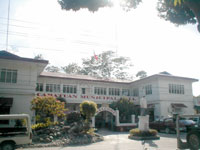 In 1732, Spanish missionaries established a mission station by planting a wooden cross (made from hard thick murawon or molave) said to have been four meters high, on a gently undulating hill now known as Pamul-ogan in a quest to bring Christianity to the town. Remains of that historic cross with the date 1773 engraved at its base, still stands on the same hill reminding everyone how vitally important religion is in defining a certain society and its state organization.
In 1732, Spanish missionaries established a mission station by planting a wooden cross (made from hard thick murawon or molave) said to have been four meters high, on a gently undulating hill now known as Pamul-ogan in a quest to bring Christianity to the town. Remains of that historic cross with the date 1773 engraved at its base, still stands on the same hill reminding everyone how vitally important religion is in defining a certain society and its state organization.
The proximity to a level track of land near the northern bank of the Tigum River paved the way for its early settlement, the site where the Poblacion of Cabatuan is presently located.
The name Cabatuan is believed to have derived from the word "Kabatuhan" means "full of stone or bato" in the Hiligaynon dialect.
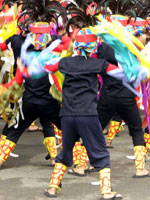 One of the nine municipal towns that make up the third district of the Province of Iloilo, Cabatuan, a third class municipality in the west central part of the province, claims a total of 11,653 hectares, bordering Maasin to the east, the towns of Alimodian and San Miguel to the south, Janiuay to the north, and the towns of Sta. Barbara and New Lucena to the northwest. The territory of the town includes 68 barangays with the majority of its 45,935 (2000 Census on Population) residents contained in its urban areas.
One of the nine municipal towns that make up the third district of the Province of Iloilo, Cabatuan, a third class municipality in the west central part of the province, claims a total of 11,653 hectares, bordering Maasin to the east, the towns of Alimodian and San Miguel to the south, Janiuay to the north, and the towns of Sta. Barbara and New Lucena to the northwest. The territory of the town includes 68 barangays with the majority of its 45,935 (2000 Census on Population) residents contained in its urban areas.
Cabatuan life blends traditions from the past with new activities. For the most part, Cabatuan is a stable town with a considerable degree of domestic tranquility. Historically, most Cabatuan people lived in agricultural villages. Cultural imports started with agriculture and the use of metals marking the beginning of a rich cutlery-making tradition that has continued to the present day. Seasoned craftsmen from the First Cabatuan Metalcraft Association found in Brgy. Maraguit fashioned scrap irons into fine cutleries.
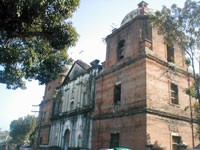 But with the construction of the multi-billion Iloilo Airport of International Standards, the town is slowly acquiring a tremendous momentum and is at present entering a new era marked by remarkable transformations--slowly becoming modernized and urbanized, life in this town has evolved new patterns adding additional diversity to Cabatuan life.
But with the construction of the multi-billion Iloilo Airport of International Standards, the town is slowly acquiring a tremendous momentum and is at present entering a new era marked by remarkable transformations--slowly becoming modernized and urbanized, life in this town has evolved new patterns adding additional diversity to Cabatuan life.
Spanish influence is evident in the large religious structures in Iloilo and the San Nicolas de Tolentino Parish Church is the Cabatuan's most famous tourist attraction. Built simultaneously with its town hall in 1733, the church is known for its Neo-classical architecture where each side is a facade in itself and walls are overlaid with red bricks.
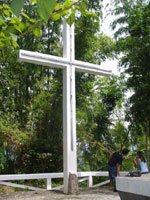 The local government seeks to make Cabatuan more competitive by working closely with industry in order to identify new opportunities for growth. The town's very dynamic and ever-supportive Municipal Mayor, Hon. Ramon C. Yee has created programs to assist key industry sectors, and have included future enhancement for some established industries.
The local government seeks to make Cabatuan more competitive by working closely with industry in order to identify new opportunities for growth. The town's very dynamic and ever-supportive Municipal Mayor, Hon. Ramon C. Yee has created programs to assist key industry sectors, and have included future enhancement for some established industries.
Cabatuan have made many contributions to the tourism industry for the province over the years. Tourism contributes substantially to the town's progress. In the recent years, the sector has been given a high priority in the town's economic development strategy. Cabatuan promotes a growing tourism industry with the municipal mayor administering a number of assistance programs in promoting the town.
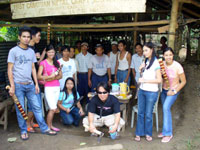 The town has a marvelous local cuisine called Tinuom, most popular is at Leah's Tinuom, is much imitated in other parts of the province, based on local ingredients like tomatoes, onions, tanglad and native chicken. Known for its exotic taste, Cabatuan will strike this year by incorporating its popular cuisine with a brand new festival concept, Tinuom Festival.
The town has a marvelous local cuisine called Tinuom, most popular is at Leah's Tinuom, is much imitated in other parts of the province, based on local ingredients like tomatoes, onions, tanglad and native chicken. Known for its exotic taste, Cabatuan will strike this year by incorporating its popular cuisine with a brand new festival concept, Tinuom Festival.
The municipality wanted to deviate from the conventional tribe competition and decided to incorporate the ingredients of the dish in its cultural performance concept, where guests can enjoy the sight and sound of this newly conceptualized festival. The mayor says that the inspiration for the festival came from its famous Tinu-om dish. Performed to foster identity and to promote tourism, the TINUOM Festival dance is some sort of a trance dance that bring about ritual purification of the community.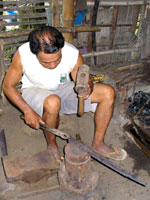 Re-established this year, performers will portray the movement of the chicken blending it with theatrical and musical forms. Energetic and demonstrative, dancers move swiftly to the accompaniment of the drums.
Re-established this year, performers will portray the movement of the chicken blending it with theatrical and musical forms. Energetic and demonstrative, dancers move swiftly to the accompaniment of the drums.
The town's incoming festivity will be as rich and innovative as ever, and it will burst out this coming Sunday, September 3, 2006 at 9 o'clock in the morning, in a cultural celebration that many think is best for Cabatuan. Other events include the opening of its Agro-Industrial Fair, a lecture on chicken advocacy by the Western Visayas State University Extension Program, Food Festival, Tinuom cooking contest and the Festival Queen Presentation and talent Night.
